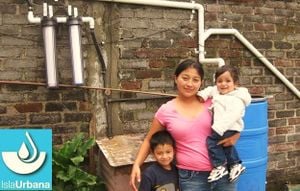
The following is a list of goals, test procedures, survey questions, equipment needed, and abstracts for testing systemwater quality in the field, the effectivness of different components in the field, and the effect of different rainwater harvesting designs. This is one test in a series of 4 different tests of rainwater, grid water, and store bought garafon drinking water quality at The Laboratory of Community Alternative Technologies at Ajusco in conjunction with Isla Urbana. Both groups are non profits in association with International Renewable Resources Institute-Mexico located in Mexico City. Isla Urbana is a group providing rainwater catchment systems around Mexico City and other areas of Mexico, Ajusco Labs is a laboratory testing center for appropriate technology projects and outcomes. Ajusco Labs will be testing rainwater quality outcomes from Isla Urbanas systems set up around Mexico City. This is one part in a series of rainwater testing at Isla Urbana and Ajusco Labs. Click here to connect to the main page on Rainwater quality testing.
Abstract[edit | edit source]
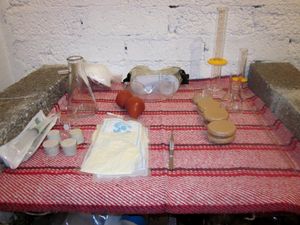
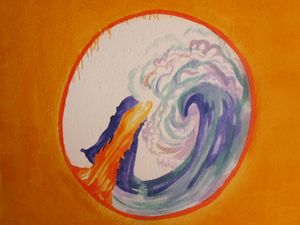
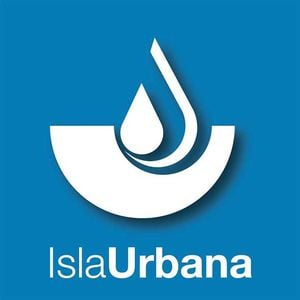

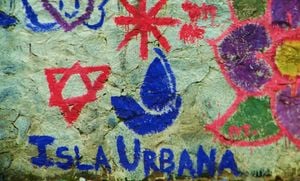
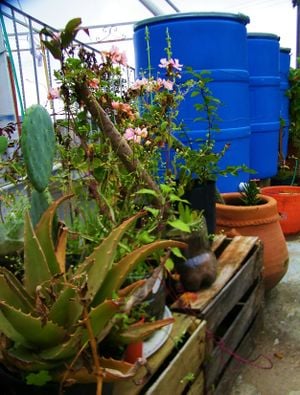
Testing different components of a rainwater harvesting system in the field is an important procedure in order to understand different environmental and human variables not seen in testing results from a laboratory environment. The goals of this study are to find out the ending water quality in real systems set up in the community by Isla Urbana in Mexico City, the removal rate of contaminants by the overall system and by different components in real systems in the community, to understand how effective different components are in the system with age (and possible suggest replacement times for different components), as well as which points in the system can be susceptible to contamination from outside sources, how grid water compares to ending rainwater, and how municipal water mixed with rainwater in the cisterns effects the overall rainwater quality. We will achieve this by taking samples from 6 different sites in each system all the way from pure rainwater before touching the roof to the ending faucet. Our samples will come from at least 25random systems. 4 of the 6 samples can only be taken during the rainy season, this limits our sample time to June through October. Samples will be compared against both water potability and recreational water standards by the World Health Organization (WHO) and the Environmental Protection Agency (EPA). Though Isla Urbana's systems are not suggested for use for drinking and instead are regularly used for bathing, washing clothes, and brushing teeth, these standards do not directly apply, but can be used as guidelines for understanding the water quality provided by rainwater systems at Isla Urbana.
Goals[edit | edit source]
- Finding out the ending water quality in real systems set up in the community
- What is the removal rate of different components in real systems in the community
- How effective are different components in system with age, (and possible suggest replacement times for different components)
- Which points in the system can be susceptible to contamination from outside sources, (other then the roof and gutters obviously) and how municipal water mixed with rainwater in the cisterns effects the overall water quality.
- How different components like the roof, gutters, and piping may effect water quality
Equipment[edit | edit source]
- 6500 ml containers with lids
- Icebox
- Ice
- Gloves
- Equipment and reagents as specified in the colorimeter manual for each parameter
Test Timing[edit | edit source]
Those parameters highlighted blue can only be done in the rainy season. The parameters in orangeshould be done whenever their is access. The parameters in yellow should be done every time and anytime.
Sampling sites[edit | edit source]
- Before rain touches roof
Frequency: can only be done during a rain - After gutters
Frequency: can only be done during a rain. Take a sample as often as possible given the access to the system. - In first flush
Frequency:Can only be done during the rainy season. - In cistern
Frequency:every time - After filters in rotoplas or tank on top of roof
Frequency: every time - From tap in house
Frequency:every time
Process[edit | edit source]
- Watch the weather because you will only be able to take 4 of the 6 samples during rain.
- Record the time and date of taking samples, to know how long its been raining for and when the last rain was.
- Place 500ml container on roof to catch water fall before it hits the sky. This will help us understand rainwater quality before system and atmospheric contaminants influencing rainwater quality. Label Site#1 and the address of house, and write the date and how long into the rain in minutes on sample container.
- Place 500 ml container after the gutters in a location that works best, this might include making a hook and basket to hold the container in place. This sample will help us compare water quality in cistern with water quality in a prior part of the system so we can understand how grid water in the cistern effects the rainwater quality and will help us understand gutter,roof, and pipe effect on water quality. Label Site#2 and the address of house, and write the date and how long into the rain in minutes on sample container.
- Place a 500 ml container under the empty valve of the first flush. This sample will help us understand how well first flush works and how much of the contaminants it helps remove. . Label Site#3 and the address of house, and write the date and how long into the rain in minutes on sample container. Make sure to write down the date of the sample since different times will have resulting different removal rates, with higher removal rates in the first rains. This sample can only be taken after a rain and before someone of the house manually empties the first flush.
- Put on gloves and place a sterile 500 ml container under the water level of the cistern. This sample will help us to understand how mixtures of grid water in the cistern effects the rainwater quality and to understand effects of cistern on water quality. . Label Site#4 and the address of house, and write the date and how long into the rain in minutes on sample container.
- Check to see where the filters are connected in the system, if they are before the rooftop tank then proceed to place a 500 ml container under the empty valve of the rooftop tank. This sample will help us understand how effective filters are at removing contaminants from rainwater.. Label Site#5 and the address of house, and write the date and how long into the rain in minutes on sample container.
- For the last sample place a 500ml container under the faucet hooked up to the rainwater system. This will help us understand the ending rainwater quality and the contaminant removal of the overall system.Write down what room the tap is in or use the tap has (kitchen, bathroom, etc). . Label Site#6 and the address of house, and write the date and how long into the rain in minutes on sample container.
- Put samples in icebox with ice until you can test them or until you can place them in refrigerator.
- Testing for coliforms must be done within 6 hours of taking the sample.
- Test samples along the parameters in Section 2, parameters will be tested according to the colorimeter manual.
- For coliform testing samples must be tested within 6 hours.
- Reagents used in the testing may be toxic and will need careful disposal, check the colorimeter manual for proper disposal and check Section 3 for locations and contact information for the proper disposal organizations in Mexico City.
Results[edit | edit source]
In process, this is a year long study starting this November 1, 2010.